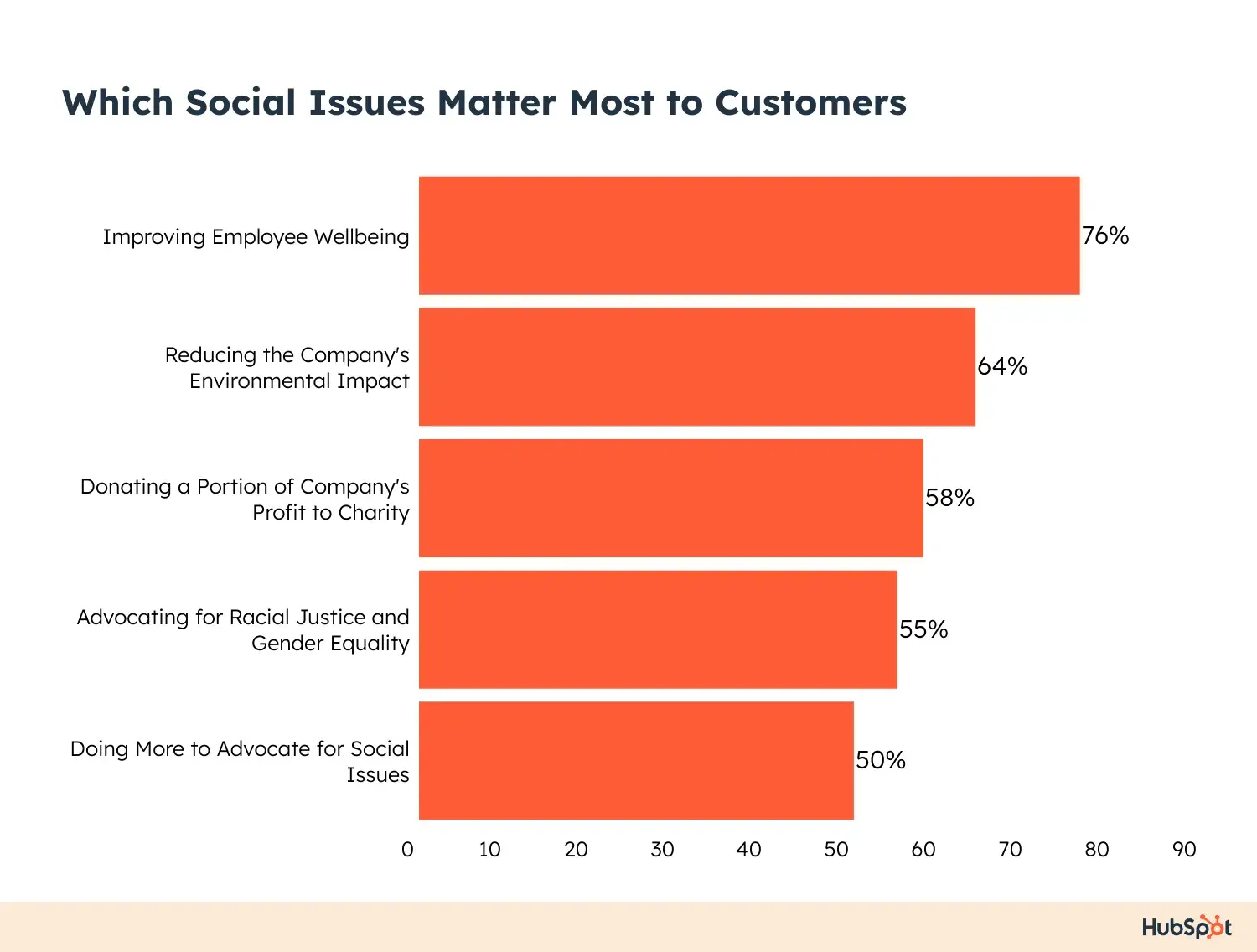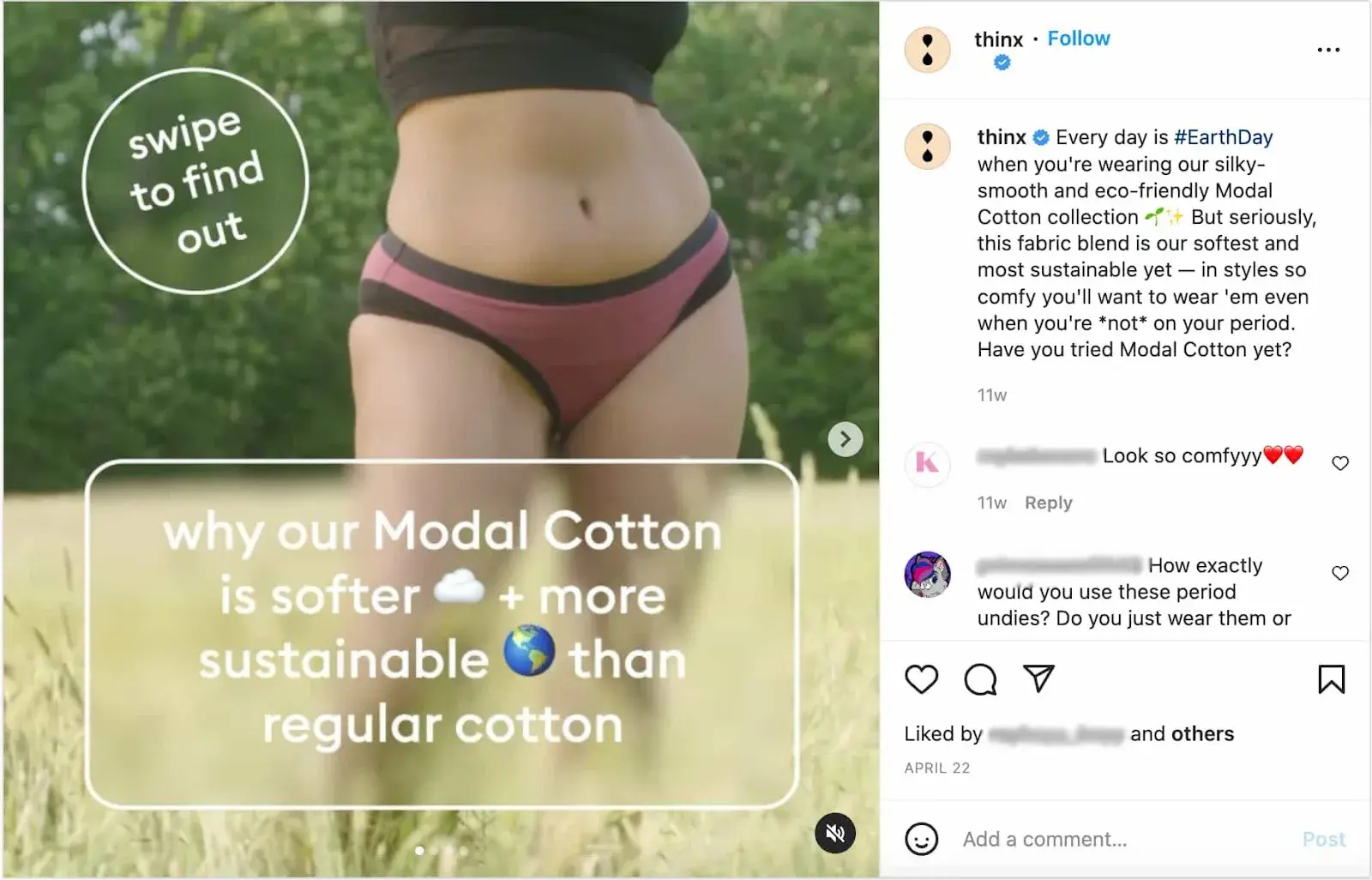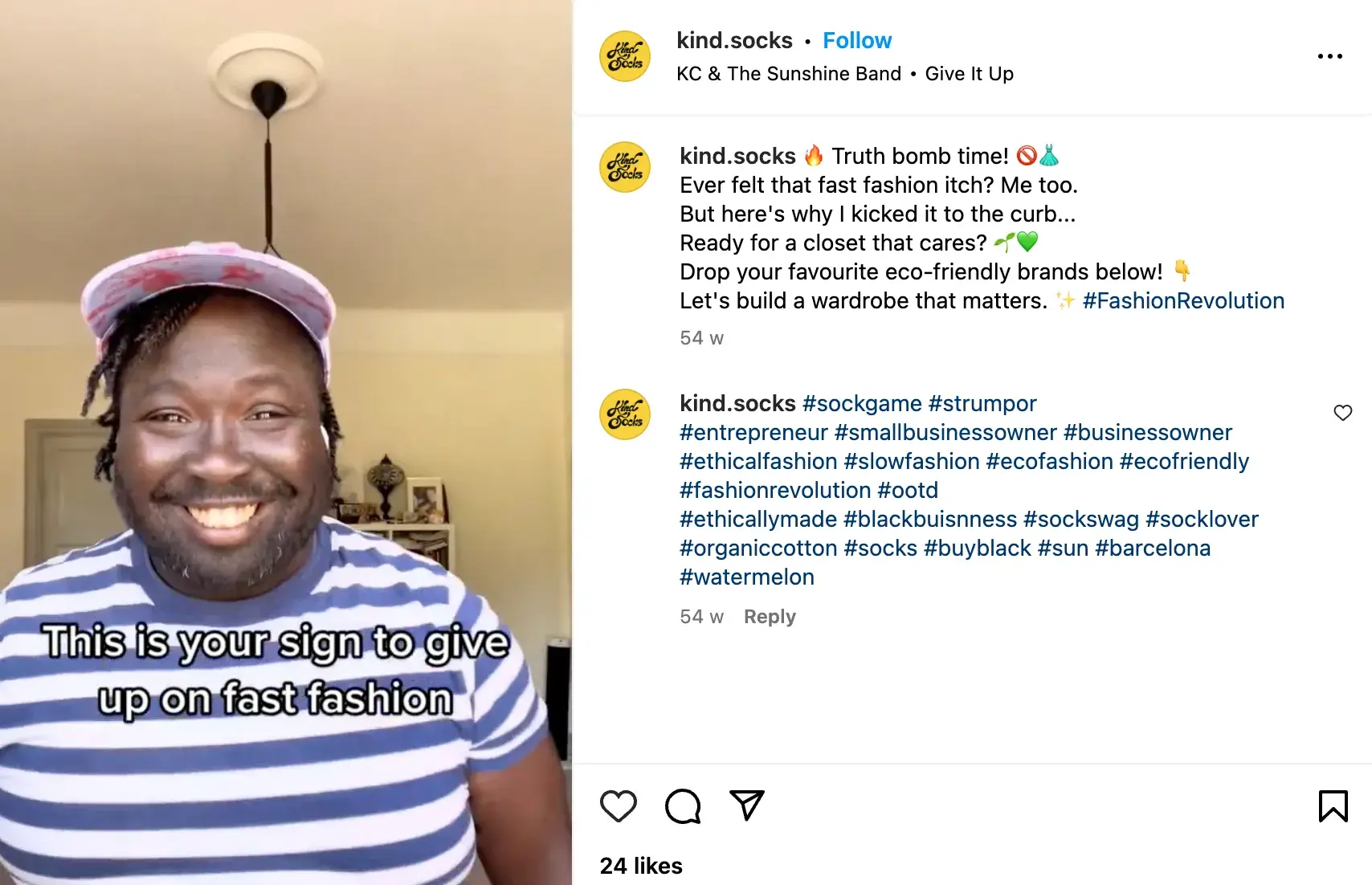Price, shipping, and reviews are all factors I consider when purchasing. But there is another factor that can make the difference for me, and that is sustainability.
When choosing between similar products, I often tend to choose the brand with sustainable practices.
From research, I know that I am not alone.

Our State of Consumer Trends Report found that buyers consider a company’s environmental impact, DEI commitment and ethical production practices.
And they are willing to pay more for brands with sustainable practices.
Smart brands are bringing this to the forefront with sustainability marketing. So how does a brand use sustainable marketing to appeal to a growing, socially conscious audience? We'll cover that and more below.
Table of contents
What is sustainable marketing?
Sustainable marketing is the promotion of socially responsible products, services and practices. While eco-friendly brands naturally work on sustainable marketing campaigns, brands that aren’t rooted in sustainability can still apply its principles to their strategy. Your goal is to promote a mission, not a product or service.
Green marketing vs. sustainable marketing
Although both terms are often used interchangeably, there is a difference between them Green marketing and sustainability marketing.
Green marketing focuses on strategies that promote environmental awareness and conservation. Sustainable marketing, on the other hand, is a little more comprehensive.
It includes green marketing, but also includes practices that go beyond the environment, such as social and economic concerns.
Sustainable marketing principles
When integrating sustainability into the DNA of your branding and marketing strategies, it’s important to know which approach you should take. Familiarize yourself with these three basic principles of sustainable marketing, which I will explain below.
1. Customer value marketing
You can gain customer loyalty by designing products, services, and marketing strategies that align with customers’ values. For sustainable marketing, this often means highlighting eco-friendly attributes, values like diversity and inclusion, or the long-term benefits of sustainable products.
2. Sustainable pricing strategies
This principle is about educating customers about the full life cycle costs of producing a sustainable product, including procurement and downstream costs of reuse and recycling. With the right education and communication, customers can be convinced that the benefits are worth paying more for.
3. Marketing with social benefits
Social benefit marketing, also known as societal marketing, focuses on long-term benefits to society that go beyond a company’s profits or immediate benefits to consumers.
Ben & Jerry’s, for example, focuses its marketing on its three core values: human rights and dignity, social and economic justice, and the environment. “We believe that ice cream can change the world,” they explain. Then you Back up these principles with actions.

Image source
Is sustainability important to customers? (New data)
While sustainability was once viewed as a luxury or niche tactic, it has established itself as a mainstream and generational preference. In a world where I can buy the same product from dozens of online sellers, I look for one that is local, supports fair trade, or supports a cause or charity I like.
In 2024, we surveyed over 700 consumers to learn more about their shopping habits. Here’s what I learned:
- 76% believe that companies should try to improve the well-being of their employees
- 64% believe that companies should actively reduce their environmental impact
- 58% believe companies should donate a portion of their profits to charity
- 55% believe companies should be committed to racial justice and gender equality
- 50% believe companies should be more committed to social issues, with the top issues being affordable healthcare (47%), climate change (35%) and income inequality (35%).

These values are reflected in consumers’ purchasing decisions, especially among the younger generation. While only 5% of baby boomers say a brand’s environmental impact is an important purchasing factor for them, this figure rises to 16% of Generation Z.
The difference is even greater when it comes to a company’s charitable support and employee well-being.
So to answer the question posed at the beginning of this question: Yes, consumers of all ages value sustainability.
Even if your brand isn’t rooted in this mission, it will still make sense for you to invest time and resources in sustainable practices and marketing to attract more customers.
Find out more about consumers in our latest issue State of Consumer Trends Report.
1. Pursue a larger goal.
Brands typically judge their success by the numbers. How much revenue they have or will generate in a given period is usually the biggest KPI.
Sustainability changes this perspective by allowing brands to value themselves on something other than profit.
As a brand, you need to promote something beyond your products and services and beyond a specific industry.
Do you have a clear social mission? If not, spend time figuring out what that is and what role your brand plays in furthering that mission.

Image source
For example, a fashion brand Autumn Adeigbo sells clothing, accessories and home decor. However, their mission, as stated on their website, is to impact the lives of women on a global scale.
One way they achieve this is by using women-owned production facilities and employing female artisans.
2. Think long term.
Sustainability marketing is about creating long-term value. Too often brands focus on achieving instant results.
For example, many marketing tactics like running Google Ads and blogging are great lead generators. However, what happens once your lead has made a purchase and converted into a customer? Sustainable marketing looks for ways to encourage and educate consumers throughout the buying journey.
Sustainability initiatives—like replacing Styrofoam with paper or reducing your carbon footprint—can take years to implement. Publishing sustainability plans and keeping customers informed of your progress goes a long way toward building trust, but doesn’t result in immediate, attributable growth.
Education is a way to build early loyalty with your audience, from initial discovery to subsequent purchase. For example, a food brand could educate its audience on social media about the importance of ethical farming and continue that process with packaging recycling tips after purchase.
This works well to build trust and loyalty in the long term: A Vericast study found a strong relationship between consumer preference for sustainable practices and consumer preference for purchasing from brands they already know and trust.
3. Be customer focused.
You may be thinking, “Isn’t all marketing consumer-focused?“Ideally, yes, but not always.”
In traditional marketing, a brand often tries to bring a product or service closer to a customer. Consumer-focused marketing is more about understanding your customers’ needs and tailoring your marketing to them.
First, use user research to find out what matters to your customers. Let’s say your audience wants more transparency in your procurement practices or wants you to be more vocal about social issues.
You could use this information for your next campaign or even change your business practices to stand out from everyone else in your space.
4. Back up your claims.
Sustainability marketing doesn’t work if it’s not authentic.
Imagine finding out that a company that claims to be sustainable has not implemented measures to further its mission. Consumers would distrust this brand and it would be difficult to win it back.
Make sure your brand looks at sustainability from a holistic perspective.
Do you preach about sustainability but use unsustainable resources to make your product? Are you working with brands that conflict with your mission? Is your team representative of the future you want to promote?
These are the questions you should ask to determine if your brand reflects the mission you want to achieve. Identify the areas that need work and go to the drawing board to find strategies that fit your mission.
The audience doesn’t expect perfection. However, they value transparency. It’s okay (and recommended) to let us know what your current shortcomings are and how you plan to address these issues.
5. Involve stakeholders.
Because sustainability requires real change rather than superficial value signaling, collaboration is required. Sustainability is a major effort and requires leadership outside of marketing. Engage internal teams, shareholders, suppliers and community partners in sustainability conversations and research.
In some cases, your organizational structure may make sustainable practices difficult, e.g. B. adopting a more expensive but more sustainable supplier if a company has a mission to increase profits.
Smaller companies may consider converting to a nonprofit corporation or obtaining B Corp status to formalize their sustainability commitments.
6. Go against the grain.
In marketing, it can seem like everyone is playing a copycat game, using the same promotions and tactics over and over again. For example, posting on social media about Earth Day or International Women’s Day is good practice, but it won’t stand out among the thousands of other branded posts.
Breaking with your industry carries the risk of failure – but it could also pay off in a big way. Take the outdoor brand REI, for example. As Black Friday sales reached their peak, the brand shocked the public by closing its stores on the day and instead urging people to #OptOutside.
Although the company loses in-store revenue on this day every year, it gains loyalty from its members and employees, who would rather spend their time outside than in a store.

Image source
Examples of sustainable marketing
Need inspiration for marketing your sustainability practices? Learn from these five brands that belong in the sustainability hall of fame.
Thinx is an underwear brand whose mission is to provide sustainable solutions for menstruation and incontinence. Everything the brand puts out in marketing is aligned with this core value.

Image source
The brand’s social media pages feature a mix of product promotion, educational content, and mission-focused announcements.
The key to sustainable marketing is to do it in an authentic way that fits into the brand, rather than as an add-on that is thrown in when necessary. Thinx is a great example of how to do it right.
This clothing company was founded out of the founder’s desire to find a sock company with a sustainable and ethical vision.
While most brands focus on inviting their consumers to buy, Kind Socks takes the exact opposite approach: encouraging them to spend less and spend wisely.

Image source
This strategy may seem counterintuitive to many companies, but emphasizing the brand’s mission can help build trust with the target audience and increase their brand loyalty.
Materials science company Pangiai wants to save the environment. All of the brand’s marketing is aligned with this core mission, including this video campaign.
In it, the brand explains its mission to “reverse the cycle from the unnatural to the natural, from the plastic to the plant (…), from the new to the recycled.” The effective thing about this ad is that Pangiai describes the future it wants to see, and outlines the strategies it will implement to get there.
Throughout the ad you see Pangiai products, but they are not the focus. This shows viewers that the mission drives the products, not the other way around – and that’s sustainable marketing done right.
In the previous section, we discussed the importance of a holistic approach to sustainability marketing.
At Nada Duele, their mission is reflected in everything: from the name, which represents the idea that products should do no harm, to the initiatives in which they participate.

Image source
By visiting the How We Work section, you will learn more about working with a Guatemalan institute dedicated to protecting the forestry sector.
Pro tip: It’s important that the partnerships your brand forms align with your values. Otherwise, you risk losing credibility and trust.
Social media is one of the best and easiest ways to implement a sustainable marketing strategy. You can share a range of content, from educating your followers about sustainable practices to sharing ways your brand is sustainable.
In this example, candle company Satya + Sage shares tips for using the seed paper that comes with each candle.

Image source
Pro tip: Pay attention to your followers’ questions and comments, especially on social media, as these can inform what marketing strategies you test in the future.
Sustainable marketing and AI
As companies rush to figure out how to integrate AI into every area of their business (including marketing!), it’s important to slow down and consider the holistic implications. AI has the potential to reduce waste and reduce the human footprint by completing tasks more efficiently, but the impact is much broader.
When integrating AI, consider these facts and questions:
- CO2 footprint of AI. Training and operating an AI system requires an enormous amount of computing power and electricity, increasing carbon emissions. Accordingly an MIT report, Data center power demand in North America nearly doubled from 2022 to 2023 – exceeding the needs of over 70% of countries.
- Bias in AI systems. It is well documented that AI systems can reproduce prejudices against groups such as women and minorities. When integrating AI to interact with customers or create marketing content with AI, consider the potential impact on these populations.
- Impact on employees. Our survey found that customers pay attention to how companies treat their employees. As companies replace some functions, such as customer service, with automation, think about your affected employees. Can you retrain them for new AI jobs or support them through a career transition?
While AI may have some negative impacts, it also has the potential to help you achieve your sustainability goals.
For example, you can build a model to analyze your systems and suggest ways to reduce your carbon footprint by optimizing your supply chain. You can also use an AI chatbot to educate customers about sustainable practices.
Is marketing with AI more sustainable?
I can’t give you a clear answer as to whether using AI is more sustainable for your brand. It really depends on what sustainability priorities you have identified and whether AI helps or hurts them.
Take beauty brand Dove, for example. One of her long-standing values is to recognize real beauty and show authentic women’s bodies.
In 2023, Dove released an advertising campaign stating that they would never use AI-generated women in advertisements as it would go against their values of highlighting real beauty.

Image source
Even though Dove may be integrating AI in other ways internally, they realized it was important to indicate how they were doing it wouldn’t Use it.
Engage customers with sustainable marketing.
From DEI to environmental impact, it’s clear to me that customers are increasingly caring about where their products come from and the people behind them.
My key takeaway for you is this: Sustainable marketing isn’t just a box to check, it’s a company-wide practice and cultural shift. It is a long-term strategy that gains trust, loyalty and customers over time.
When you consider new factors like AI in marketing and climate change, you stay close to your customers to learn what they want to see from your brand.
Above all, customers value transparency and want to know more about your journey, even if you haven’t yet achieved your goals. So don’t be afraid to start small and take your customers with you.
Editor’s Note: This post was originally published in October 2021 and has been updated for completeness.











